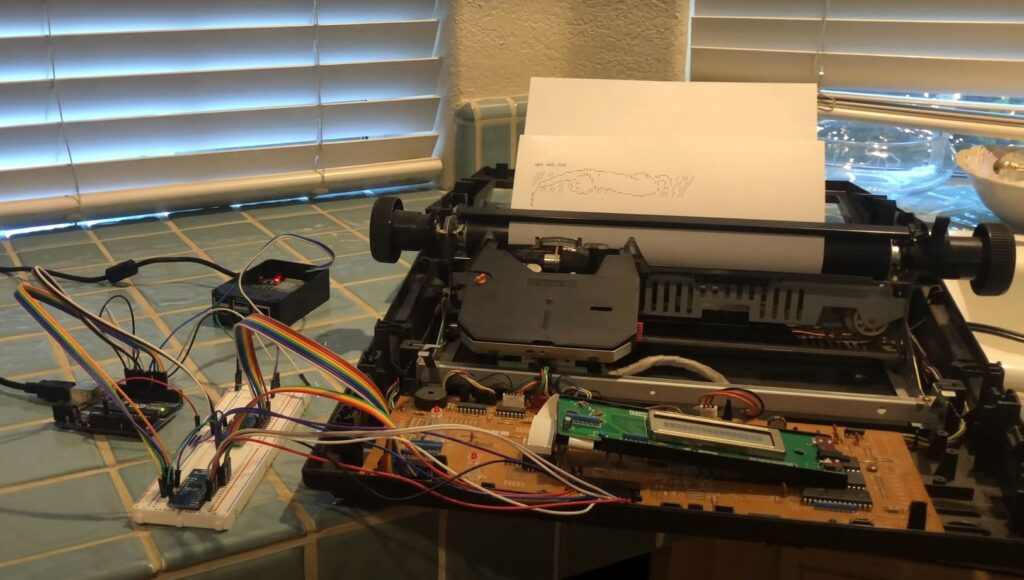Raspberry Pi project ideas: Reanimating the Retro!

Here are some new and exciting Raspberry Pi projects that find ways of reanimating the retro!
Interactive fiction games with Raspberry Pi Pico

Eric Badger has created the BadgerFrotz, which allows you to play Interactive Fiction games like Zork.
Eric built this system by porting the Frotz Z-Machine port which is an interpreter for all Infocom and other Z-Machine games.
He also had to figure out a way to output video on the Pico and he provides a link to how he did it in the project’s Github. Nonetheless, you can probably port this to custom hardware or a Pimoroni VGA board.
Above all, this project is a learning experience on how to manage the Pico’s limitations. According to Eric,
“The project demonstrates how to utilize the Pico’s flash memory in a way that works with multiple cores and the DMA/PIO generating the VGA signal. Writing to the flash is moderately painful since no code can be running from the flash while writing to it. As such, all running code must be in RAM, DMA can’t be running. The project demonstrates how to write to flash and then reestablish the VGA signal.”
If you like his project, you could buy an ebadger LodeRunner device. The ebadger LodeRunner runs Loderunner as well as BadgerFrotz without any changes. See the video’s left frame which juxtaposes an Apple II on the right side.
More info at Eric Badger’s Github.
Pico W Geiger counter

Dmytro Panin built this Geiger counter and uses the Raspberry Pi Pico W to broadcast the data online.
He used a $50-$60 M4011 Tube and implemented the software in C++.
The Pico Geiger counter measures ionizing radiation in nano-Sieverts per hour (nSv/h).
Panin lives in the centre of Kyiv, Ukraine which is near Chernobyl, and he measures radiation from his apartment’s window.
I’ve built an online Geiger counter with a @Raspberry_Pi Pico W that keep track of ionizing radiation in my city.
— Dmytro Panin (@dr2mod) October 23, 2022
Reading are updated every few hours: https://t.co/hGWzDfT8bY pic.twitter.com/QGlcDBFMNq
At the time of writing, his API was reporting 156 nSv/h, which is equivalent to the effect of eating one-and-a-half bananas. Here are some relevant comparisons, note that the XKCD linked is in micro-Sieverts, while Panin’s API reports it in nano-Sieverts. 1 Nano = 0.001 Micro.
Brother AX-25 typewriter… Revived!
Makers have used the Raspberry Pi in various retro projects including gaming console emulation and reanimating a jukebox.
This goes even further by reviving a typewriter.
Artillect built this project using a Raspberry Pi, Arduino and a Brother typewriter, and the reason for creating this project is “I like tinkering”. Artillect says,
“I’m not entirely sure why people are so drawn to retro tech nowadays, I think part of it is the fact that things were so much simpler back then. I know that’s definitely why I like tinkering with retro electronics. I could probably completely reverse-engineer my typewriter in a few weeks, can’t say the same about modern PCs!”

You might be guessing… “uh, is this just a typewriter? Then why not NOT mod it and leave it as it was?”
Yes, this actually functions as a typewriter. But more than that, this is a fully-functioning Linux Terminal. You can do anything that does not require a user interface. So, no, you can’t use nano as your word processor, but you can use ed (a text editor)
But how do you see what’s happening on the Terminal? Well, it outputs lines onto paper!
You can also check out our Paragon Projects series by clicking here.
If you have any questions or if you’d like to suggest a project, comment below!